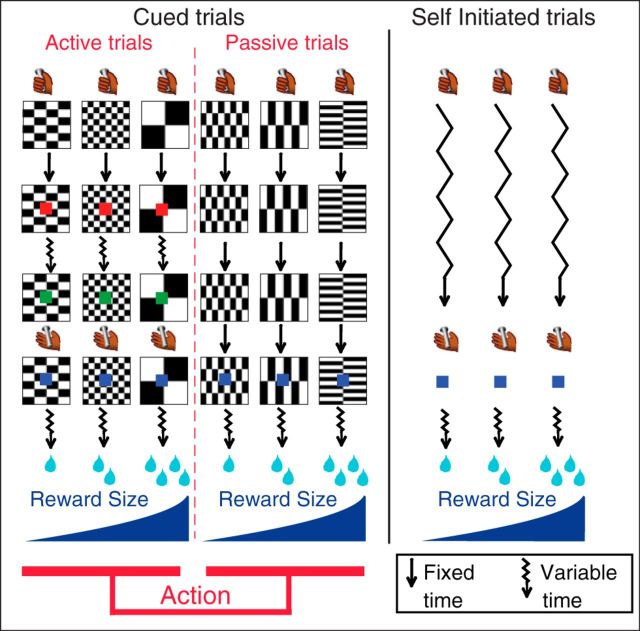Figure 1.
Experimental design. Monkeys perform three types of trials: cued-active (left), cued-passive (middle), and self-initiated (right) trials. Every trial starts when the monkey touches a bar. In cued trials, a visual cue (black and white pattern) indicates a combination of two factors: reward size (1, 2, or 4 drops of fluid) and action (active or passive trial). Left, In the cued-active trials, monkeys must release the bar when a red spot (wait signal, 500 ms after cue onset) turns green (go signal) after a variable time (500–1500 ms, jagged arrows), in which case a feedback (blue spot) appears, followed by the reward after 400–600 ms. Middle, In cued-passive trials, the feedback appears 2 s after cue onset independently of the monkey's behavior. Right, Self-initiated trials simply required touching and releasing a bar; no cue is present. Self-initiated trials are run in randomly alternating blocks of ∼60 trials with constant reward size (1, 2 or 4 drops).

